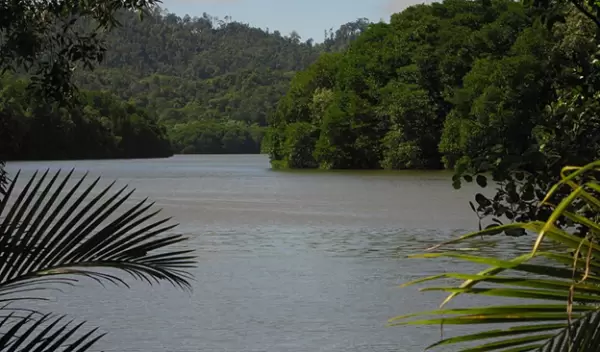
A prehistoric forest grows in Brunei
The first study of leaf fossils conducted in the nation of Brunei on the island of Borneo has revealed that the current dominant tree group, the dipterocarps, has dominated the rainforests there for at least 4 million years, according to a research team led by Penn State in partnership with Universiti Brunei Darussalam.
The findings, supported by the U.S. National Science Foundation and published in the journal PeerJ, suggest that the current landscape is similar to what was present during the Pliocene Epoch, 5.3 to 2.6 million years ago, and may provide additional justification for conservation of forests that support critically endangered species.
"This is the first demonstration that the characteristic dominant life form of Borneo and the entire Asian wet tropics, the dipterocarp tree, was not only present but actually dominant" millions of years ago, said Peter Wilf, a geoscientist at Penn State.
The dipterocarps are the world's tallest tropical trees. The largest can reach 100 meters (328 feet) tall, approximately the height of a 22-story building.
Wilf said the dipterocarps include hundreds of keystone species that support tropical Asia's biodiversity by structuring rainforests and providing enormous food resources through pollination and nutritious seeds. Borneo has almost 270 dipterocarp species, more than half the world's total.
"Fossil leaves in the wet tropics are very rare because of extensive forest cover and deeply weathered soils that obscure rock exposures," Wilf said.
Past studies of the island's plant life generally involved fossil pollen, which is resistant to decay. However, because dipterocarp pollen often does not preserve well, the data don’t provide complete information on ancient plant landscapes in the Asian tropics, according to Wilf.
The study offers fossil evidence from both leaves and pollen, collected at two sites the team discovered after intensive reconnaissance in Brunei. The results support the idea that the current landscape's diverse, well-structured vegetation is like what was present during the Pliocene Epoch, 5.3 to 2.6 million years ago.


